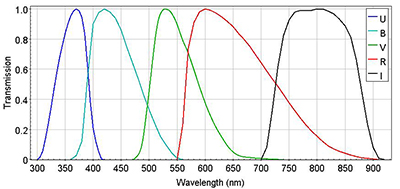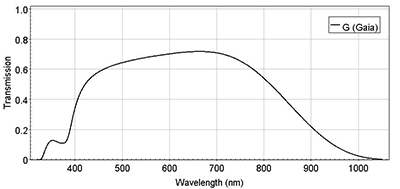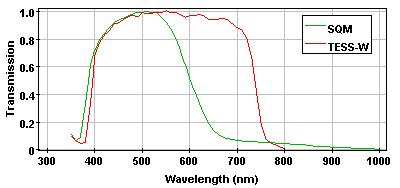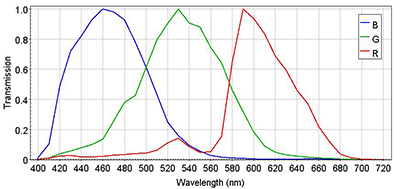Moon Brightness Calculator
Introduction
This tool allows to modelling the Moon sky brightness at any time and place. No source other than the Moon is considered (i.e. integrated starlight, sky background, airglow, etc).A paper describing the model and the use of the tool is being prepared.
How to use it
Input modes
NOTE: Each single computation takes a few seconds. For a file with hundreds of lines, the total computing time could be very long. We recommend limiting the size of the input file to no more than one hundred lines, which should take a few minutes.
Output

with Δi the HealPix solid angle element (sr).
For the human photopic and scotopic bands, E is multiplied by 683 lm/W or 1700 lm/W, respectively, to get the corresponding Horizontal illuminances (lx).
Photometric bands
The web provides a set of available photometric bands (see below). The user can also use any photometric band by uploading a two-columns file with the wavelenght (nm) and the transmission [0,1].The currently available photometric bands are
Johnson-Cousins system (UBVRI)
The UBVRI magnitudes are defined in the Vega system. The fluxes in those bands correspond to filters with transmission peak equal to 1.
Gaia filter (G)
The Gaia magnitude is defined in the Vega system. Note that the filter's transmission is not normalized to 1.
SQM and TESS-W bands
SQM and TESS-W bands are defined in the AB system. The fluxes in those bands correspond to filters with transmission peak equal to 1
RGB System
The RGB magnitudes are defined in the AB system. The fluxes in those bands correspond to filters with transmission peak equal to 1
Human vision (photopic and scotopic)
Photopic and scotopic magnitudes are defined in the Vega system. The fluxes in those bands correspond to filters with transmission peak equal to 1
Sloan system (ugriz)
The Sloan magnitudes are defined in the AB system. Note that the filter transmission are not normalized.
Contact addresses:
emasana at fqa.ub.edu (E. Masana)
salva.bara at usc.gal (S. Bará)
The Gaia4Sustainability project is founded by MCIN/AEI /10.13039/501100011033 and by Next Generation European Union EU/ PRTR










